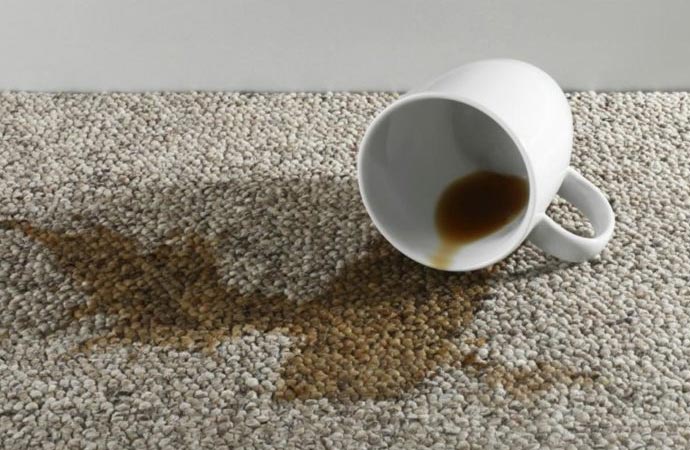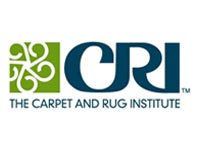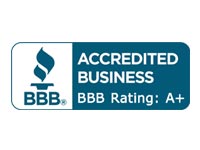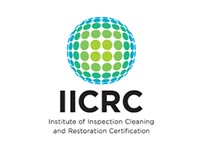Rug Cleaning Tips & Stain Removal Tips
This section on rug cleaning has some of the most important information for any rug owner. You might want to add this site to your list of favorites so you can get back to this page quickly and easily.
Depending on its location, an area rug might be subjected to lots of abuse. Things like dirt, dust, sand, oily cooking residue, moisture (especially in kitchen or bathroom areas), along with spills and foot traffic can have an impact on the appearance and the life of your rugs.
Some rugs may look as though they’re losing their vibrant color when often it’s just a matter of the color being camouflaged by soil and grime. The fibers of a rug can become packed and matted if dirt, dust and other particles are not removed on a regular basis. Also, when fibers become packed and matted, some rugs have a tendency to attract and hold even more particles.

Rug Pads:
As much as I’d like to find one, there’s no such thing as a self-cleaning rug. They need the right kind of rug cleaning to be at their best.
We’ll look at general guidelines as well as more specific rug cleaning tips for different types of rugs.
Select any desired aspect (style, color, material, size, etc.) and narrow it down, one option at a time, until you have a rug that's just right for you!
Although it has been mentioned elsewhere on this site, something that certainly bears repeating is the strong suggestion to use the proper rug pad under all rugs! This applies whether the rug is on a hardwood floor or on wall-to-wall carpeting.
A rug pad keeps your rug from sliding around, plus it can help your rug retain its original appearance longer and extend the life of the rug by preventing premature aging of the rug.
Rotate Your Rugs:
It is recommended that you rotate your rugs at least once a year. This means turning the rug end for end or 180 degrees. This helps the rug to wear more evenly. Sunlight can cause fading and traffic patterns can cause uneven wear and rug cleaning just can't undo that. So, rotate your rugs and avoid excessive fading or deterioration.
Most pictorial rugs do not fall under this guideline of rug rotation since they might feature a design or scene that is best when the rug is placed one certain way.
Vacuum (or Shake) Your Rugs:
Vacuuming is an essential part of rug cleaning for most rugs because dirt and sand act as abrasives and can damage or break down the fibers of your rug.
I said ‘most rugs’ in the previous statement because it is better to shake out a few types of rugs, such as a flokati rug or a leather shag rug, rather than to vacuum them. After shaking a flokati rug, the fibers can be gently ‘combed’ or ‘raked’.
Some rugs, such as those made from sisal or bamboo, can be shaken OR vacuumed.
Smaller rugs can be shaken by hand. Hold one end of the rug and shake it so you give it a good ‘snap’ to loosen dirt and other particles. Then, do the same while holding the opposite end of the rug.
Rugs that are too large to be shaken in this manner can be hung over a fence or a clothesline and beaten on the back/bottom of the rug with a broom handle or similar object.
Although some rug experts advise vacuuming expensive or elaborate rugs on a daily basis, it’s a fact of life that most people already have enough to do and daily vacuuming is not always going to happen.
So, the best thing is to fit it in as often as possible. Keep in mind that rugs in busy areas, such as a family room or hallway, need to be vacuumed more often than rugs in areas with less activity or traffic.
There are some people who believe the vacuuming of rugs should be done with suction only (using just the hose and an attachment) and that the rotating beater bar should not be used on any rugs.
Many other people with an opinion about rug cleaning feel it is okay to use the beater bar on cut pile rugs as long as basic guidelines are followed.
It is recommended that you rotate your rugs at least once a year. This means turning the rug end for end or 180 degrees. This helps the rug to wear more evenly. Sunlight can cause fading and traffic patterns can cause uneven wear and rug cleaning just can't undo that. So, rotate your rugs and avoid excessive fading or deterioration.
Most pictorial rugs do not fall under this guideline of rug rotation since they might feature a design or scene that is best when the rug is placed one certain way.
These vacuuming tips apply no matter whether the hose and an attachment are used or the beater bar is used.
- Change the vacuum bag or empty the dustbin regularly. A vacuum will lose efficiency as the bag/bin becomes more than half-full and letting a bag/bin get completely full could damage the motor.
- Some new rugs might need to be vacuumed more often during the first year due to fuzz on the rug. This ‘fuzzing’ is normal and it does not
shorten the life of your rug in any way. It is the result of loose fibers that cling to the rug during the weaving process. - Vacuum rugs by going over them in both directions, especially on rugs with a traffic pattern. This will help prevent matting.
NOTE: Contrary to that last statement, some experts advise that vacuuming a rug should be done only in the direction of the pile; in the same way a cat is stroked.
Please understand that different opinions are shown because it just seems fair to present both points of view and leave it up to you to decide what is best in your particular situation.
Vacuuming Tips for Cut Pile Area Rugs
Cut pile rugs have a smooth, even surface that is created when the tops of the loops are cut off.
A vacuum with a rotating beater bar will vibrate or gently agitate the rug pile allowing particles to become loosened and suctioned into the vacuum.
If suction only is used on cut pile rugs without the benefit of a beater bar, it will remove surface particles but could leave other particles embedded in the rug that can cause excess wear and tear through abrasion.
- Adjust the height of the beater bar so that it will lightly vibrate the rug. If the beater bar is set too low, it could cause the vacuum motor to slow
down as well as cause damage to the rug. - Check to make sure the beater bar is rotating properly. A worn or loose belt may cause the bar to operate less efficiently.
- Be careful with rugs that have fringe on the ends. Do not run the beater bar over the fringe because part of the fringe may get caught and be pulled out.
Cut pile rugs have a smooth, even surface that is created when the tops of the loops are cut off.
A vacuum with a rotating beater bar will vibrate or gently agitate the rug pile allowing particles to become loosened and suctioned into the vacuum.
If suction only is used on cut pile rugs without the benefit of a beater bar, it will remove surface particles but could leave other particles embedded in the rug that can cause excess wear and tear through abrasion.
- Adjust the height of the beater bar so that it will lightly vibrate the rug. If the beater bar is set too low, it could cause the vacuum motor to slow
down as well as cause damage to the rug. - Check to make sure the beater bar is rotating properly. A worn or loose belt may cause the bar to operate less efficiently.
- Be careful with rugs that have fringe on the ends. Do not run the beater bar over the fringe because part of the fringe may get caught and be pulled out.
On area rugs with looped textures, vacuum the rug regularly using suction only. Avoid using the rotating beater bar. This will keep the loops from getting damaged.
Cut pile rugs have a smooth, even surface that is created when the tops of the loops are cut off.
A vacuum with a rotating beater bar will vibrate or gently agitate the rug pile allowing particles to become loosened and suctioned into the vacuum.
If suction only is used on cut pile rugs without the benefit of a beater bar, it will remove surface particles but could leave other particles embedded in the rug that can cause excess wear and tear through abrasion.
- Adjust the height of the beater bar so that it will lightly vibrate the rug. If the beater bar is set too low, it could cause the vacuum motor to slow
down as well as cause damage to the rug. - Check to make sure the beater bar is rotating properly. A worn or loose belt may cause the bar to operate less efficiently.
- Be careful with rugs that have fringe on the ends. Do not run the beater bar over the fringe because part of the fringe may get caught and be pulled out.
On area rugs with looped textures, vacuum the rug regularly using suction only. Avoid using the rotating beater bar. This will keep the loops from getting damaged.
Rugs should be rolled, not folded. When transported in a moving van, a rolled rug should be placed on top of furniture and then have nothing heavier than a lampshade placed on top of the rug.
If a rug ends up with a crease, it will soon disappear when the rug is laid flat and the rug is walked on.
If a corner of a rug does not want to lie flat, a small stack of books placed on the corner for a few days will ‘iron’ it out.
For long-term storage, a rug should first be professionally cleaned and mothproofed and then wrapped in a clean, breathable (not plastic) material to help avoid mildew.
Let’s look at different cleaning methods and stain removal tips for various types of natural rugs as well as synthetic rugs. These tips will show you how to take care of the most common spots and spills.
The services of a professional rug cleaner should be utilized periodically to ensure your rugs get a complete and thorough cleaning to help keep them at their best. A professional will know the best cleaning methods for the different types of rugs.
It is highly recommended to always let a professional clean certain types of rugs, such as high-quality rugs, hand-made Persian and Oriental rugs, as well as antique rugs.
Here’s a practical rule of thumb to keep in mind: The more valuable a rug is or the more fragile it is, the more you should be inclined to have the rug professionally cleaned.
Many professional rug cleaners offer in-home service for rugs that are too large or too
- Take a plain white towel and dampen it and then rub it across the surface of the rug. If the towel becomes soiled, you’ll know that the rug needs to be cleaned.
- Lift a corner of the rug and if dirt comes out when you slap the rug with the back of your hand, it’s time for a good cleaning.
- Look at the foundation of the rug by gently pulling the fibers apart and if you see dirt in the warp and weft threads of the foundation, then a good rug cleaning is needed.
- If you have a cat or dog and you catch the pet leaving a mark, there’s a good chance it isn’t the first time that has happened. Clean the rug and get a book about behavior modification for pets.
And when they do, it's best to take care of them right away. No need for a professional rug cleaner in most cases. Usually, quick action and a few simple steps are all you need to take care of a spill.
Time is of the essence when there is a spill on a rug. Many rugs have a stain-resistant treatment that does not allow the spill to be absorbed into the rug right away, giving you a few minutes to start taking action.
Also, wool fibers have a natural tendency to shed liquid, so quick action can keep the spill from getting worse.
Most liquids can be blotted with a plain white (no printing or design) paper towel if done before the liquid has a chance to be absorbed into the rug. Do not use a rubbing or scrubbing motion, as that will spread the liquid and/or cause pile distortion.
Food spills that are solid or semi-solid (things like peanut butter, jelly, fruit or ice cream) can be picked up with a spoon or the edge of a blunt knife. The remaining stain can be removed using white paper (plain white paper towels, tissue or napkins) to blot and absorb the moisture. Then, if needed, apply a little bit of the cleaning solution as shown below.
(can be used on Wool, Acrylic, Nylon, Olefin or Polyester)
Make a detergent solution for cleaning spots and spills as follows:
- One teaspoon of a mild dishwashing detergent
~ OR ~
One teaspoon of a neutral detergent (such as liquid Lux, Dreft, or Vel – a brand used for washing lingerie) - One teaspoon of pure white vinegar
- Combine those two things in a quart of warm water
Here is a list of common stains where you can expect to get good results by using this do-it-yourself cleaning solution. Unless otherwise noted, it can be applied to rugs made of wool, acrylic, nylon, olefin or polyester.
First, absorb as much liquid as possible (with a plain white paper towel) and the use a plain white cloth to apply the solution to the spot by dabbing it on. Do not use a vigorous rubbing or scrubbing motion because that will cause distortion to the pile. Work inwards from the edges of the spot or spill. Also, work in the direction of the pile as much as possible.
- Beer
- Catsup / Ketchup
- Clay (vacuum before applying solution)
- Cola
- Coffee
- Colored Paper (when color transfers to rug)
- Egg
- Enamel
- Food Dye
- Fruit Juice
- Furniture Dye
- Furniture Polish
- Glue (animal glue, but not Duco Cement or rubber cement)
(use solution on glue stains only on rugs made of nylon - Grape Drink
- Gravy
- Ice Cream (scoop up chunks with a spoon)
- Ink – India Ink, Permanent Ink or Washable Ink
- Latex Paint
- Merthiolate
- Milk
- Mustard
- Plaster (vacuum before applying solution)
- Rouge (use solution only on rugs made of polyester)
- Shoe Polish (liquid or wax type of shoe polish)
- Tea
- Urine
- Water Colors
Oxygen cleaners work well for spot cleaning a variety of stains on rugs made from synthetic fibers. One of the nice features about oxygen cleaners is that they’re environmentally safe.
These cleaners (most of them) form oxygen, hydrogen peroxide and soda ash when water is added. It is important to follow usage and dilution directions as listed on the packaging. Rinse the area well after cleaning. Also, test for colorfastness on a test area before working on the problem area.
CAUTION: Do not use oxygen cleaners on wool or silk rugs and avoid prolonged skin contact. This is because soda ash (mentioned in paragraph above) is sodium carbonate and it has alkaline properties.
Do not walk on the recently cleaned part of the rug until it is completely dry. This will help prevent pile distortion.
Dry powder cleaners can be used to remove many surface stains on low pile rugs. The dry powder absorbs the dirt particles and then it can be vacuumed up. This relatively simple cleaning method uses no water. For rugs that are heavily soiled, it is best to use another method or let a professional rug cleaner take care of it.
CAUTION: This is not a good option to use with plush rugs or deep pile rugs because the cleaning residue can be hard to remove from these types of rugs.
This cleaning method involves light detergent foam that is worked into the rug and then vacuumed out when it is dry. This method uses little or no water.
CAUTION: Use extreme care on rugs with loops because looped rugs do not have a good tolerance for the beater bar on a vacuum nor other types of brushing.
To avoid pile distortion, wait until the spot is completely dry before walking on that part of the rug.
There is some debate among rug experts about using a steam cleaner on rugs at home. The main concern is about using too much detergent or too much water or not operating the steam cleaner properly.
Some of the cleaning agents used with rented steam cleaners leave a residue. So, it is a good idea to first test the cleaning agent on a small area. If any residue is present or if the area feels sticky, do not use that product. Seek the advice of a professional, or better yet, just let them clean your rug.
Cleaning Rugs Made of Synthetic Material
Most of the rugs made with synthetic fibers including polypropylene, nylon and acrylic can be cleaned using almost any method of cleaning. Here are three general tips for cleaning synthetic rugs.
- On dried stains or dry dirt (not mud), vacuum the rug before using one of the cleaning methods. For some stains, you might want to apply a preconditioning solution to start loosening the stain.
- Follow the recommendations of the rug manufacturer and pay attention to the directions for diluting and applying any cleaning solution. Sounds simple, but many people seem to ignore this.
- Do not use laundry detergent or automatic dishwasher detergent. Also, avoid using b household cleaners that are made to clean woodwork, laminate, linoleum or tile.
Wool rugs can be cleaned using almost any of the cleaning methods, however, try to avoid excessive heat and agitation. Wool rugs should be cleaned with neutral detergents and then dried right away using adequate ventilation, but no heat. Be cautious around household cleaning products, such as bleach and other alkaline products (like bathroom cleaners) because those items can easily damage wool fibers.
CAUTION: Do not use oxygen cleaners on wool rugs.
Cleaning Cotton or Rayon Rugs
Cotton and rayon are both cellulose fibers and can be cleaned with any of the rug cleaning methods. Excessive drying and/or agitation should be avoided to prevent shrinking. As with wool rugs, use caution with alkaline products.
A dry cleaning process is the best cleaning method for rugs made of silk. Acids, both natural and synthetic, as well as sunlight can damage silk fibers. It is advisable to consult a professional rug cleaner about silk rugs.
CAUTION: Do not use oxygen cleaners on silk rugs.
Sisal, jute, coconut (coir), hemp and ramie all have characteristics that are like that of cotton. Generally, it is safe to clean rugs made of these materials with any of the rug cleaning methods. As with other rugs, it is best to dry the rug quickly, without using excess heat.







